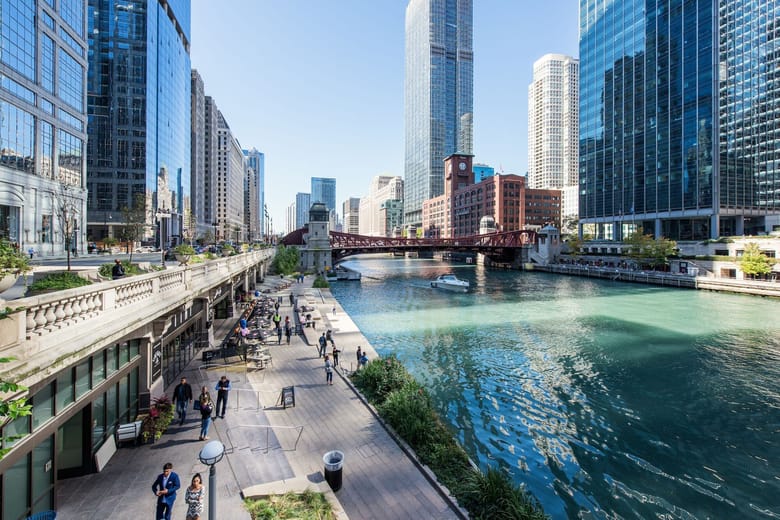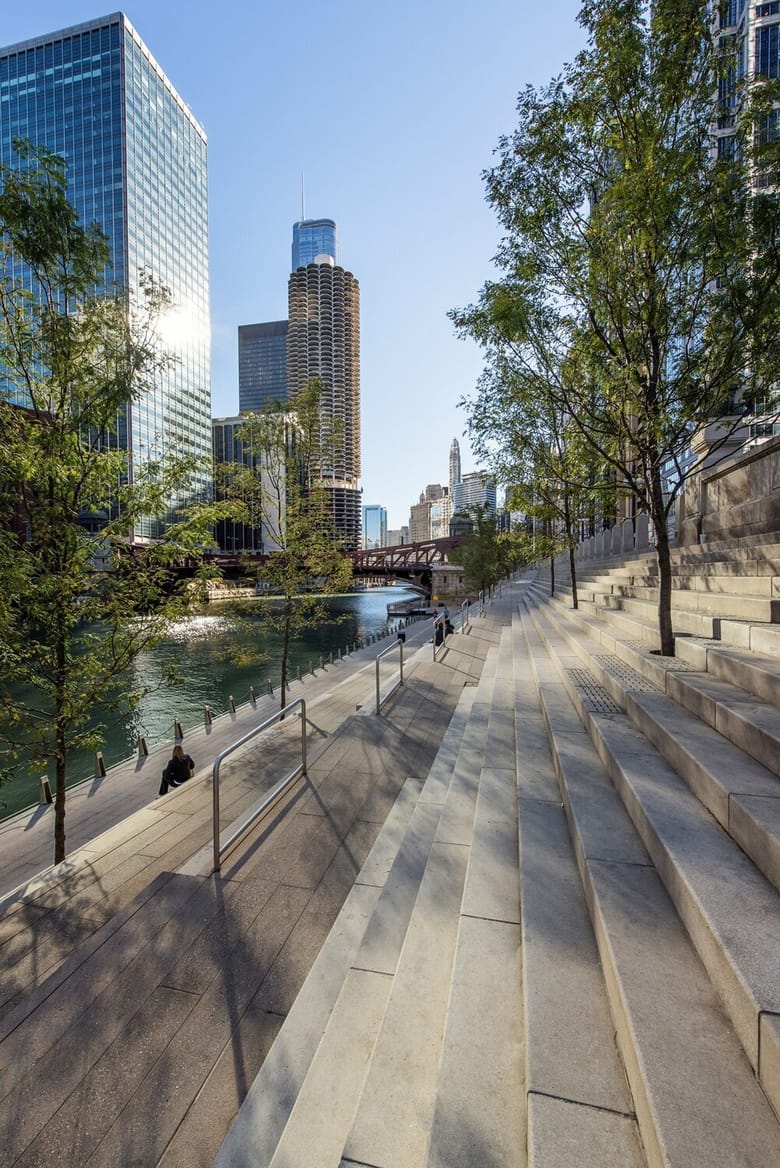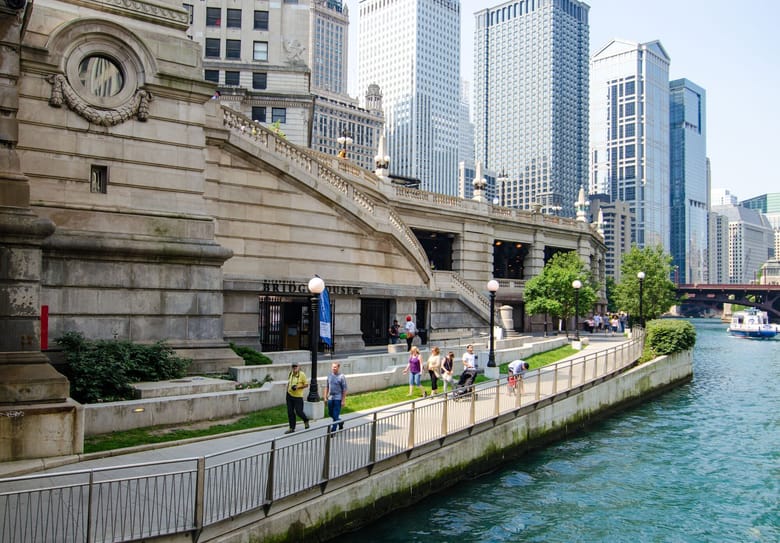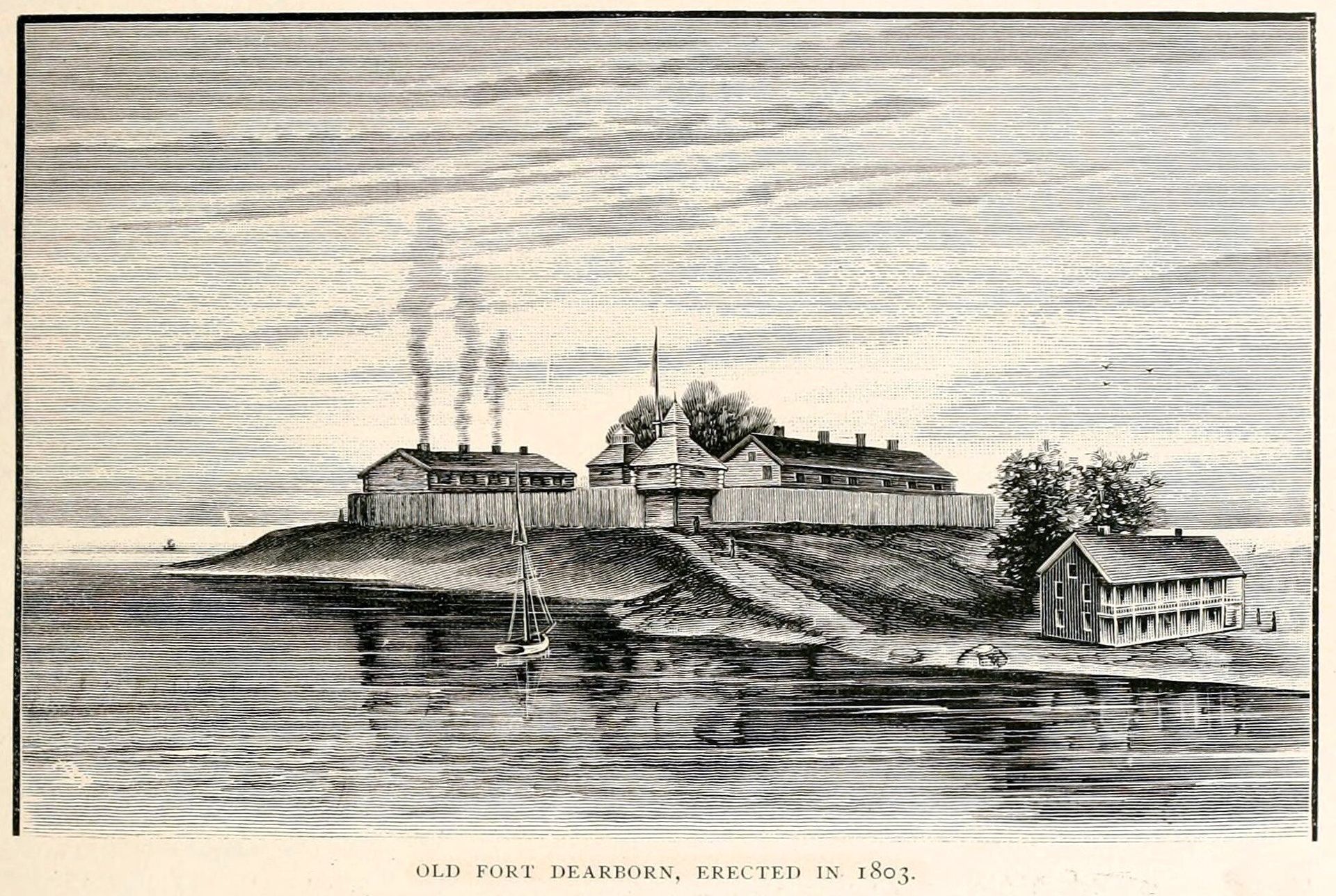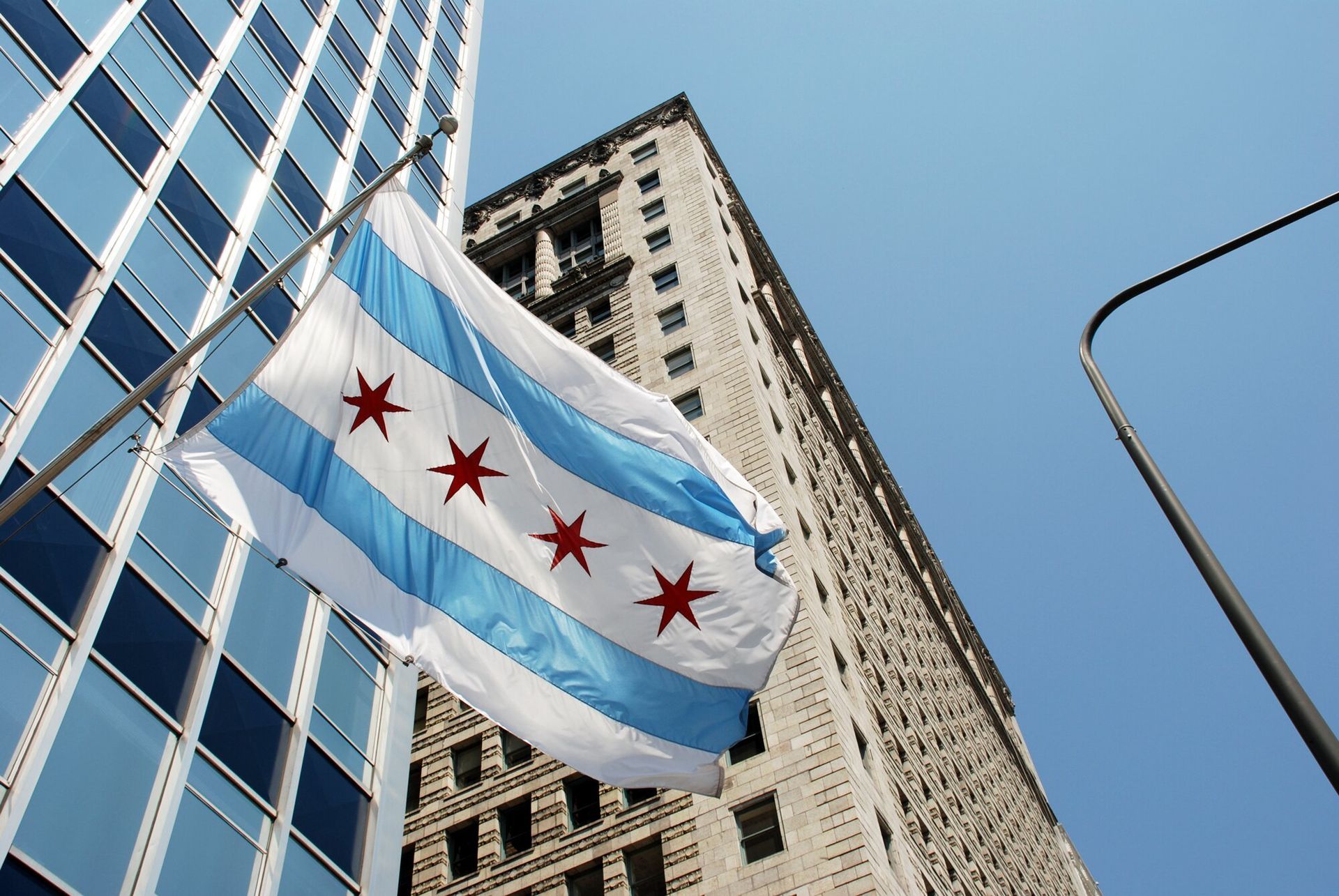A MURKY PAST
The Chicago River has been many things over the years: an artery for industrial shipping, a handy place to dump sewage, and an ever-present barrier to transportation and development. Heavy industry has given way to a glistening new downtown where people work in offices, visit famous cultural institutions and, increasingly, make their homes. Efforts to clean the river, beginning more than a century ago with the reversal of flow away from the lake, have finally paid off. Chicago is no longer embarrassed by the state of its river—now we embrace it.
A SLOW START
The Riverwalk began to take shape in 2001 with the reconstruction of Wacker Drive. The vision was ambitious from the start, but couldn’t be realized all at once. A section connecting to—and resembling—the Lakefront Trail was built east of Michigan Avenue, incorporating docks for river cruises (including the Chicago Architecture Center River Cruise aboard Chicago’s First Lady). Extensions westward linked with the McCormick Bridgehouse & Chicago River Museum and the Chicago Vietnam Veterans’ Memorial Plaza, built in 2005.
A SERIES OF CIVIC ROOMS
Mayor Rahm Emanuel accelerated work on the Riverwalk in 2012. The new stretch is divided into distinctive “rooms,” including:
- The Marina from State to Dearborn
- The Cove from Dearborn to Clark
- The River Theater from Clark to LaSalle
- The Water Plaza from LaSalle to Wells
- The Jetty from Wells to Franklin
- The Confluence from Franklin to Lake
Each room has a different design and purpose, accommodating diverse activities, from dining and performances to kayaking and fishing. These new Riverwalk sections, along with their commercial and recreational amenities, draw people closer to the river.
Did you know?
The Riverwalk has four “districts,” or related groups of rooms, from east to west: Market, Civic, Arcade and Confluence.
Did you know?
The Riverwalk was constructed with the expectation that it will occasionally flood when heavy rains raise the level of the river.
Did you know?
The framework plan for the Riverwalk was developed by Skidmore Owings & Merrill.
